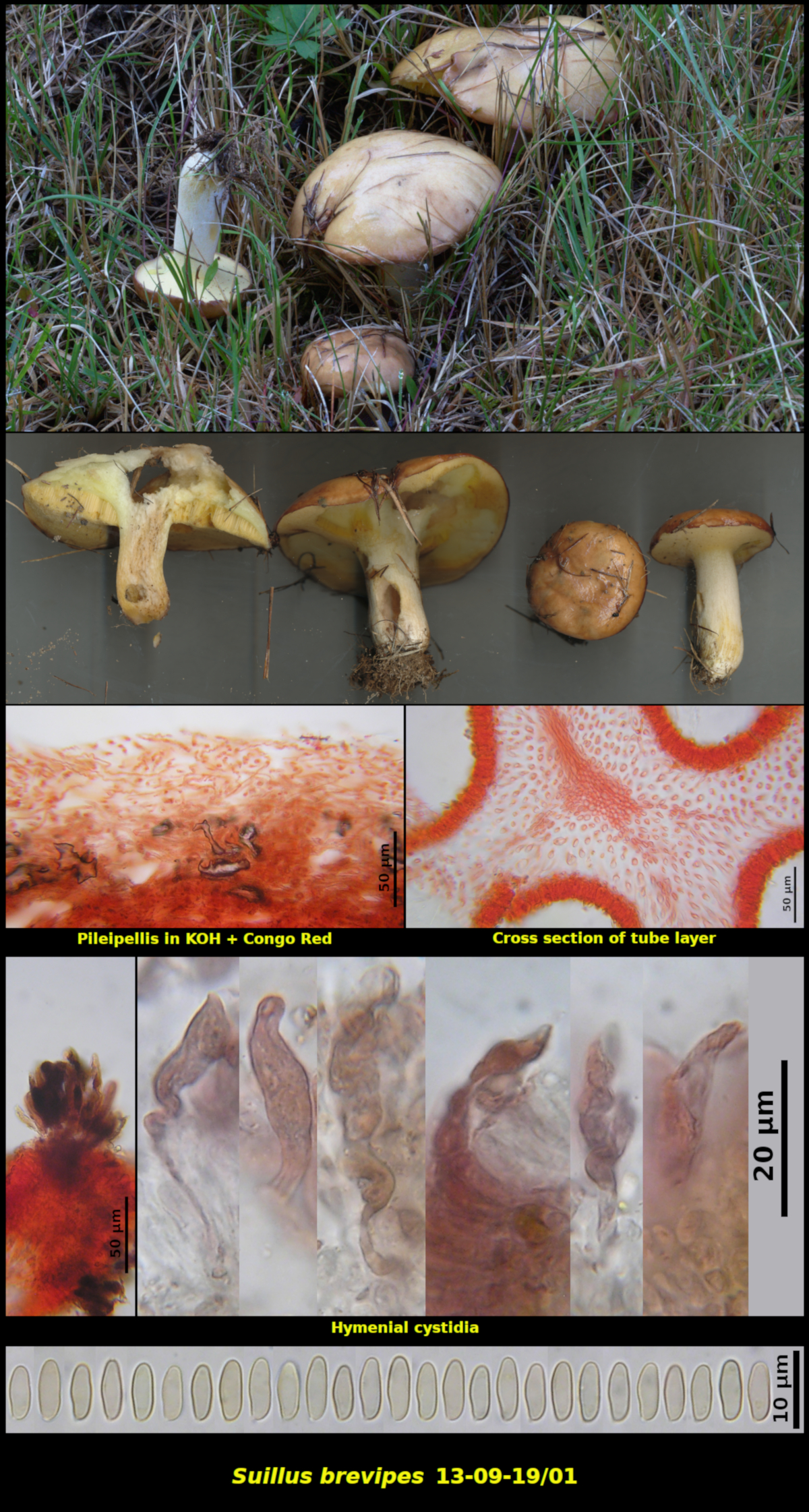Fleshy Fungi of New Brunswick >>
Suillus brevipes
Suillus brevipes (Peck) Kuntze

Gregarious (>4) in a grassy roadside area, associated with Pinus banksiana and Larix laricina, Kouchibouguac National Park, New Brunswick (13-09-19/01).
Suillus brevipes is recognized by a dark purple brown glutinous layer covering the pileus in young stages, short stipe and lack of any veil material. The dark glutinous material washes off at an early stage, leaving the cap a light yellow brown. The species occurs most commonly under two-needle pines in our area.
The cystidia occur in clusters, most abundantly at the mouths of the tubes (the "dissepiments"), and are surrounded by a brown encrusting material that may involve adjacent basidia. When viewed with a dissecting microscope the tube mouths appear to be spotted with brown. The contents of the basidia are purple brown when mounted in KOH.
Basidiospores dull greyish orange (HSV25:20:90) in spore print, boletoid, smooth, 6.9-8.2 X 2.5-3.0 μm, Q = 2.45-2.94 (average[31]: 7.5 X 2.8 μm, Q = 2.69). Hymenial cystidia occurring in clusters at the ends of the tubes, dark brown, irregularly clavate. Pileipellis a thick ixocutis.
A second collection, presumably of the same species, was collected a few kilometers from where Collection 13-09-19/01 was found. This one (15-09-19/07), also growing in association with jack pine, had slightly smaller basidiospores measuring 5.7-7.0 X 2.5-2.8 μm, Q = 2.23-2.68 (average[21]: 6.3 X 2.6 μm, Q = 2.40). Both of these collections have smaller basidiospores than those given for the large transcontinental sample cited by Smith and Thiers (A contribution toward a monograph of North American species of Suillus, 1964) as 7-9 (10) X 2.8-3.2 μm.
Photograph: D. Malloch (13-09-19/01).